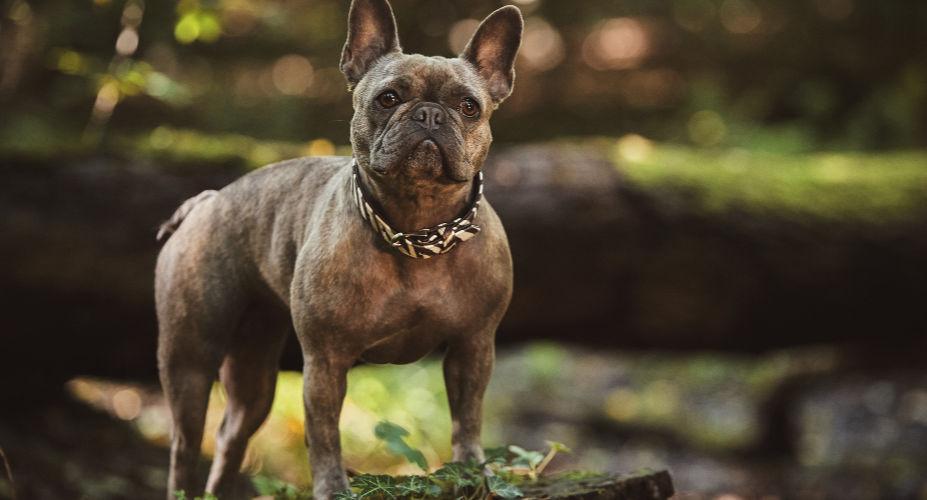
Don't just walk your dog—these exercises will get both of you in super shape.
Tricia Montgomery, founder of the K9 Fit Club, an exercise program for people and their dogs, is fit and healthy today, and so is her dog. But 20 years ago, it was a different story.
"I was morbidly obese and depressed," she recalls, and her dog Louie was suffering too. Then her vet pointed out that Louie was gaining weight, adding: "And you're not getting any thinner."
Harsh words. But they galvanized Montgomery into making some much-needed changes. Montgomery had been overweight all her life, and remembers other children taunting her in school, but it had never bothered her as much as this remark did. "I went home and cried and binged," she says.
Three days later, she made a life-altering decision. "I realized it wasn't just about me," she recalls. Because dogs mirror their owners' behavior, Louie's excess weight was a by-product of her sedentary lifestyle. So she decided that both of them were going to get in shape.
The first step was taking Louie for a walk every evening and watching what she ate. Gradually, Tricia learned more about exercise and nutrition, and incorporated strength training. Nine months later, she had lost 130 pounds, and Louie, 4 pounds lighter, was in great shape.
Following her passion for both people and dogs, Montgomery worked in executive positions in the worlds of veterinary medicine and animal rescue, and be came certified as a fitness trainer. And eventually, with experts in animal and human health, she developed the K9 Fit Club program, which now has certified trainers around the country.
"We have passed along our unhealthy habits to our pets, and it's time to reverse the trend," she says. These are some ways to do it.
K9 Fit Club Moves
Montgomery recommends doing these exercises at an intensity that is right for you. Keep your dog on your left side, on a two-foot leash held in your left hand. Throughout, always praise your dog for good actions. These can be done indoors or outside.
Woof Woof Warm-Up: With your dog following, power walk back and forth for 1-2 minutes, and then jog or sprint for another 2 minutes. Walk with your knees coming up toward your chest, 10 times on each side. Do butt kicks, 10 on each side, while your dog stays at your side. To do butt kicks: Stand with your feet slightly more than shoulder-width apart, bend your right knee and raise your right heel behind you, toward your butt, then back down, and repeat with your left leg.
Spot's Side Shuffles: Do side shuffles across a room, first to the right and then the left, with your dog walking or running in front you. Start off slow. Find your own rhythm and balance, and let your dog get used to following you, and then gradually pick up speed. To increase the intensity, bend your knees and try doing the motion in a squatting position.
Sheltie Step-Ups: Stand with your right side by a platform (height appropriate for your fitness level), dog on your left. Step up with your right foot, encouraging your dog to put its front paws onto the step. Bring your left foot onto the step and put your weight on both feet, having your dog follow. Step down with your left foot, bring your right foot back onto the floor, and have your dog follow. Repeat 10 times, then do the same on the other side.
To find a K9 Fit Club-certified trainer for you and your dog, or to get certified, visit k9fitclub.com.
Fitness for Housebound Cats
It isn't common to see pet owners walking their cats down the street, but the practice is beginning to catch on, says Steve Dale, a certified dog and cat behavior consultant in Chicago. "Most housebound cats will acclimate to a leash and harness," he says.
The trick is to do it gradually. Get a cat harness, put it on your cat, and let the cat walk around the house a few times. Then add the leash, and gradually start taking it outside for short periods. Don't try to go for a long walk.
"Cats wander," says Dale, so don't expect to get a vigorous workout. However, all physical activity counts, so it's good for you too.
If your cat is highly motivated by food, Dale recommends puzzle toys that hold kibble. Hide them in unexpected places to get your cat prowling around. Be sure to subtract the same amount of food from the cat's normal diet.
Did you know?
A study from Northwestern University in Chicago found that a dog begging for a walk can be more motivating than a gym membership.
Written by Vera Tweed for Better Nutrition and legally licensed through the Matcha publisher network. Please direct all licensing questions to legal@getmatcha.com.

